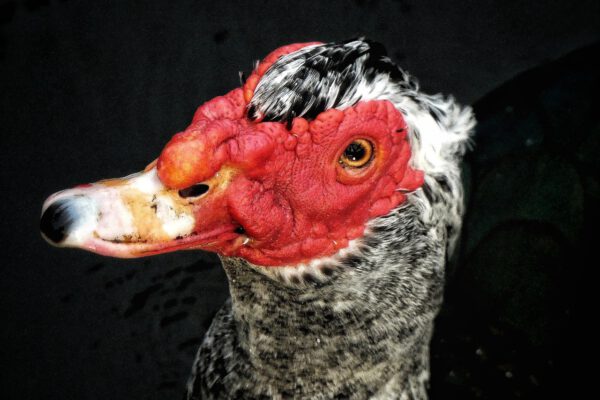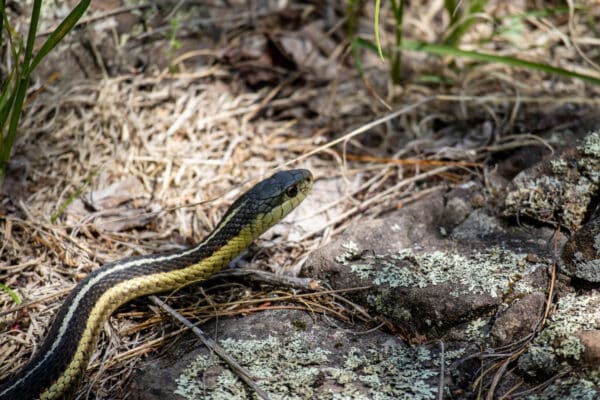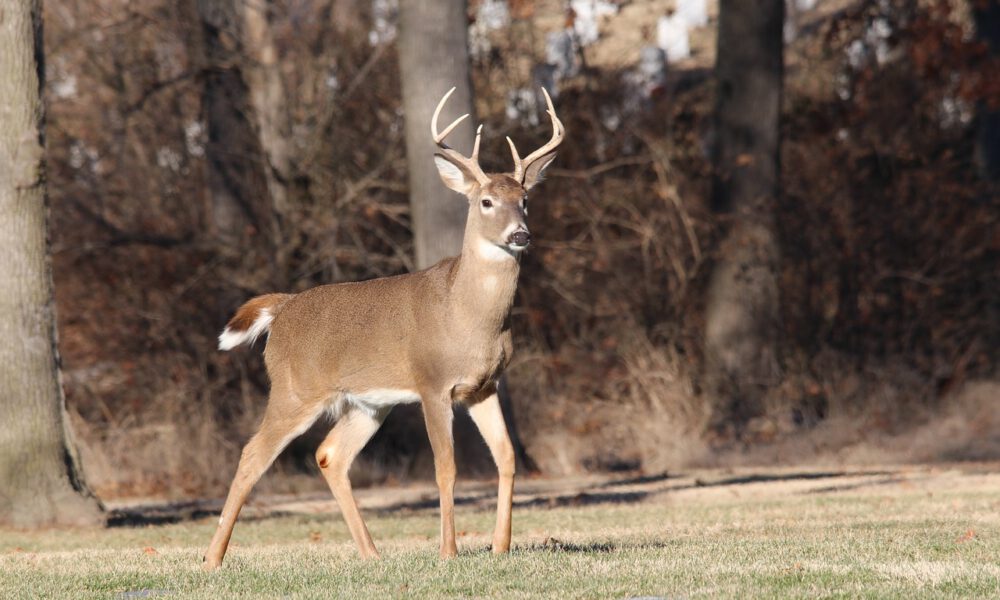
The White-tail Deer is an Iconic American Symbol.
Did you know that eleven of the fifty U.S. states honor the White-Tail Deer as their State Animal? These states include Arkansas, Illinois, Michigan, Mississippi, Nebraska, New Hampshire, Ohio, Oklahoma, Pennsylvania, South Carolina, and Wisconsin. Read on to learn facts about White-tail Deer that make them so loved in our country and worldwide.
Quick Facts About White-Tail Deer
- Like most animals, The White-tail Deer lives longer in captivity. Under human care, they undergo less stress and consume protein-packed meals.
- In the wild, White-tail Deer live for about two to five years. Some deer may live ten years.
- White-tail Deer can live almost three times longer in captivity. In people’s care, the average lifespan is about 20 years.
- For year-round camouflage, the coloration of the White-tail Deer changes seasonally.
- In the Winter, White-tail Deer are grayish-brown.
- White-tail Deer have red tones in their coats for the warmer months.
- The precious fawn from Disney’s 1942 animation film, Bambi, is a White-tail Deer. The movie was based on a book that featured Roe Deer. The Disney team decided to alter this detail because of the familiarity of the White-tail Deer in America.
Facts About White-tail Deer
With numerous film spotlights, maternal instincts, and vital roles in their environments, the White-tail Deer has proven to be one of the most well-known deer species.
But just how well do you know the White-tail Deer?
Covenant Wildlife Removal shares with you the most unique and interesting facts about White-tail Deer.
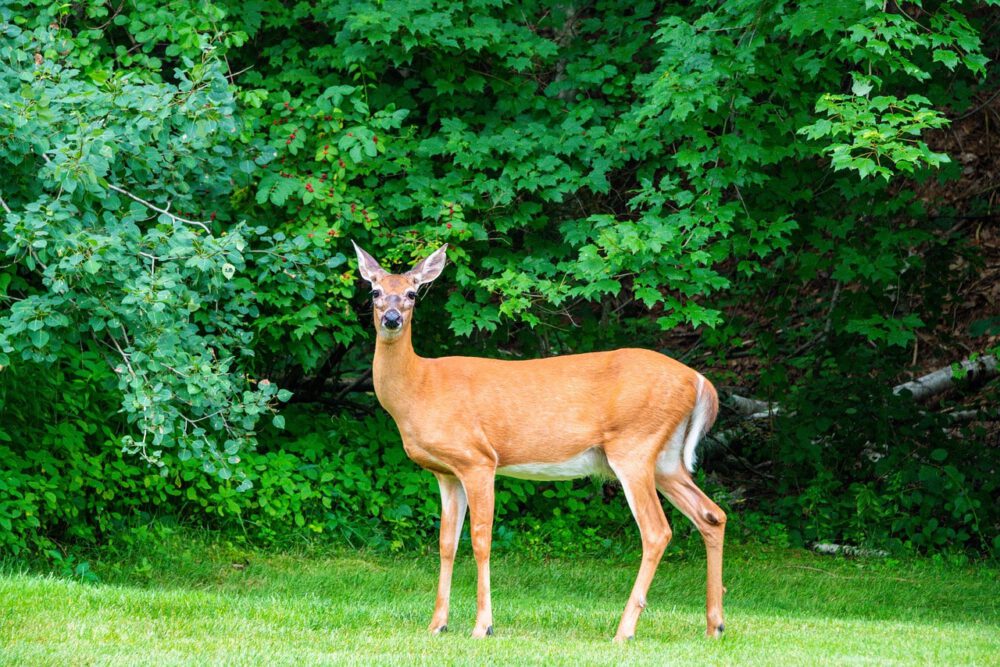
Where are White-tail Deer Found?
White-tail Deer are found thriving in Canada, the United States, and parts of Central and South America. There are even small populations living in Europe.
The White-tail Deer population reaches over 11 million in the United States alone.
White-tail Deer are generalists, meaning they don’t require unique conditions like specialists do. Their preferred environment consists of dense forest and plenty of vegetation to consume and use as protection.
With the decline of suitable habitat, you can also find the White-tail Deer right outside of urban areas or even in your more
Why Do Some White-Tail Deer Have Antlers?
The White-tail Deer antlers’ primary uses are to show dominance and compete with other Deer.
Typically, only males or bucks will develop antlers. Bucks use their antlers to assert dominance and spar with other males to compete for a mate. A doe or female deer with exceptionally high testosterone levels will grow antlers in rare cases. Antlers are shed and regrown each year for both males and uncommon females.
Antlers begin to develop just months after birth. How large their antlers will grow depends on the White-tail Deer’s mating success from the years before. Therefore, bucks that are more successful during the breeding season will have more impressive antlers.
How Does the White-tail Deer Communicate?
The White-tail Deer’s primary methods of communication are sound, body language, and scent marking.
Sound
White-tail Deer are quite vocal. They will snort, bleat, and especially grunt to one another to communicate. Buck’s sound out the loudest grunts when flaunting their dominance.
Body Language
Their bright white tails are a tool for communication, as well. When a White-tail Deer is frightened or faced with danger, its brown tail flips up to flash the white underside. This maneuver signals to nearby Deer to seek safety or flea the area.
Scent Markings
Marking with scent is another form of communication among the White-tail Deer species. All over their bodies, the Deer has scent glands. The glands are on multiple parts of their body, including their face, hind legs, and between toes. A White-tail Deer will rub the glands on surfaces like trees, leaving trails of messages.
Are White-tail Deer Social Animals?
Most of the White-tail Deer’s life is spent alone or with a small group of companions. For the breeding season, males and females will interact, but otherwise, stay separated.
Male White-tail Deer, if not alone, are observed around other males, but usually when they are still young. In contrast, females will commonly be accompanied by either a couple more adult females and young deer or fawns.
Large gatherings of White-tail Deer are not impossible but rare. Hundreds of White-tail Deer can be occasionally spotted grazing an open grass field.
Are White-tail Deer Athletic Creatures?
White-tail Deer can jump, swim, and run. And the White-tail Deer is exceptionally skilled at jumping great heights. They can jump over fences almost 8 feet tall!
Through the woods, White-tail Deer will dash up to almost 40 miles per hour. This skill is essential when some predators of the White-tail Deer include crafty wolves and coyotes.
The White-tail Deer is also a decent swimmer. At 13 miles per hour, they glide through streams and ponds during their travels.
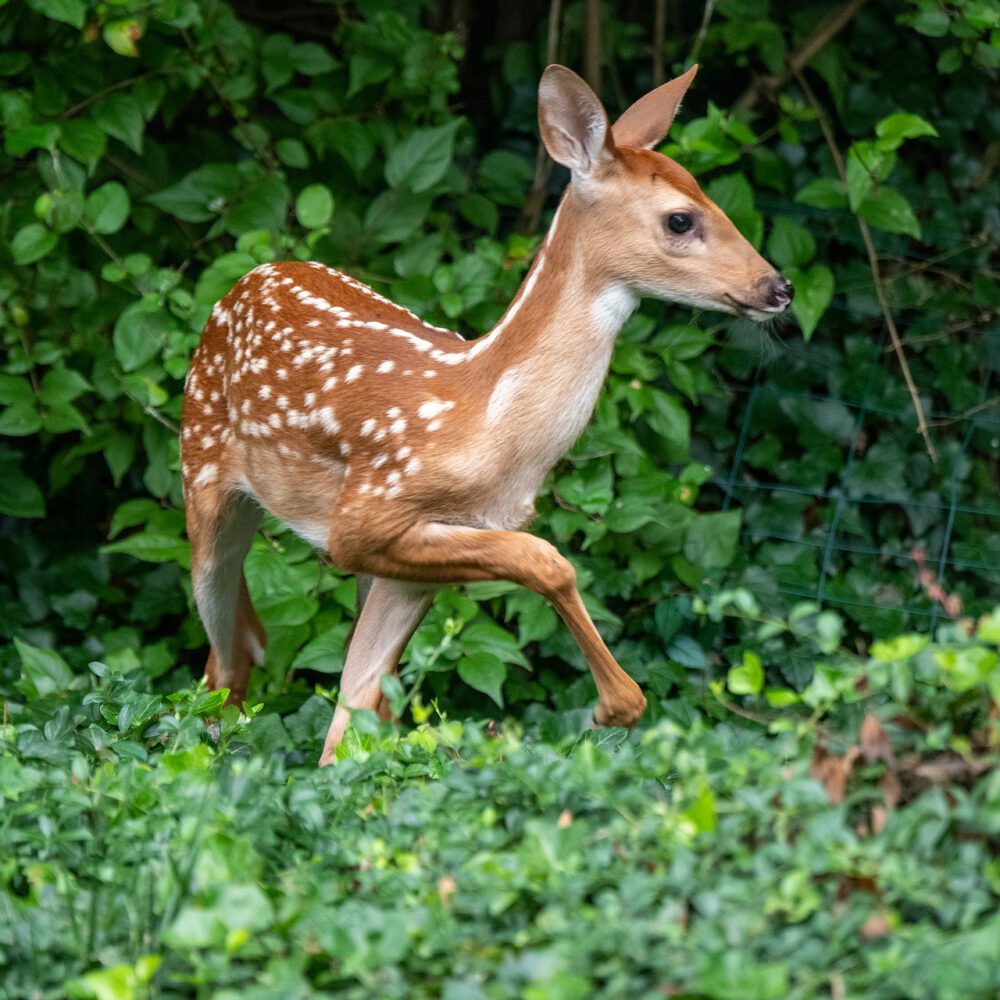
Does a Mother White-tail Deer Care for its Young?
A mother White-tail Deer is protective of her young.
During the fresh spring season, fawns are born. White-tail Deer Fawns are covered in small white spots for about three months, then shed their coats for mature ones. In most cases, does will first give birth to a single fawn, followed by twins the next year and on.
When searching for the next meal, a doe will leave her fawn hidden in tall grass or thick brush. The White-Tail Deer fawn will patiently wait for its mother to return.
Most fawns, especially young females, will stay with their mother until she has her next baby. At six months, the fawn is weaned from its mother. After 18 months, the fawn is ready to mate.
How Advanced is a White-tail Deer’s Sense of Smell?
White-tail Deer have an incredible sense of smell but poor eyesight.
While humans have about 5milliion olfactory receptors, the White-tail Deer has over 300 million. That means a White-tail Deer’s sense of smell is about sixty times stronger than your own!
In turn, the Deer’s eyesight is not nearly as impressive. White-tail Deer are primarily nocturnal creatures. They feed at dusk and dawn, not only to avoid predators but because their eyes are limited in daylight. The eyes of the White-tail Deer are sensitive to light and are much more effective at night.
Hunters wear bright orange and green because Deer view these colors as variations of gray.
Do White-tail Deer Migrate?
Not all White-tail Deer Migrate, but some certainly do.
Whether the population in a particular area will migrate depends on the conditions of the space they occupy. If the habitat is low quality, the Deer will likely migrate. On the other hand, in areas where there is plenty of suitable space and nutrients throughout the year, White-tail Deer will stay put.
What Important Roles Does the White-Tail Deer Have in its Environment?
Being a keystone species, the White-tail Deer significantly impacts their land and neighboring species.
For example, White-tail Deer grazing affects plant life in the area. They will consume just about anything available to them; therefore, lands become depleted of their natural vegetation. In spaces overpopulated by White-tail Deer, the foliage can’t regrow. Instead, invasive and non-native plant and fungi species will thrive.
The White-tail Deer serves as vital prey for large carnivores living in the woods. Bears, coyotes, jaguars, wolves, and panthers are the Deer’s natural predators.
But these wild animals are not their biggest threat. Human beings have held that title for quite some time, with White-tail Deer being one of the most hunted game.
What Should You Do If You Have White-tail Deer Wandering Your Property?
Contact the professionals at Covenant Wildlife Removal.
After learning all the unique and exciting facts about White-tail Deer, you might be tempted to welcome these stoic and gentle animals near your home.
Remember that White-tail Deer are still wild and should remain so.
White-tail Deer are not a threat to you or your family’s health. Neither are they dangerous in the traditional sense. But they may consume plants in your garden, agitate your dog, or even attract dangerous predators.
If you have White-tail Deer on your property, give Covenant Wildlife Removal a call.
Covenant Wildlife Removal is a top-rated local family-owned, full-service wildlife trapping, removal, and repair service. We can remove a squirrel or other rodent infestation before it becomes an extensive problem for you and your family.

